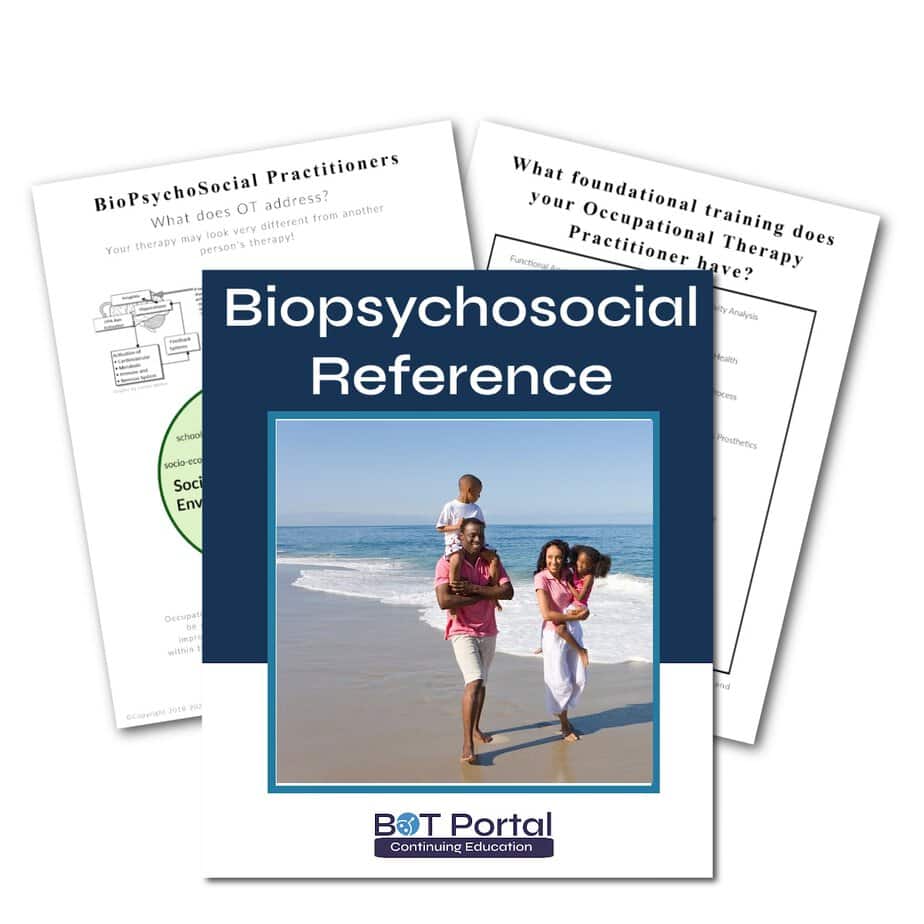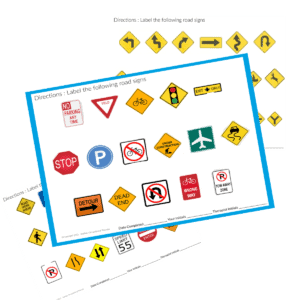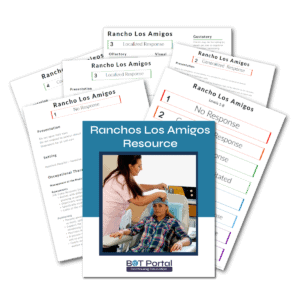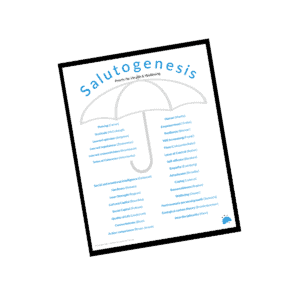Description
Biopsychosocial Model Diagram Packet for Occupational Therapy Practitioners
The Venn diagram illustrates the biopsychosocial model applied to occupational therapy (OT) and physical therapy (PT), highlighting the whole person approach. This model integrates three major components: Biological, Psychological, and Social factors, showing how each aspect contributes to comprehensive patient care.
1. Biological Factors:
- Physical Health: Both OT and PT focus on improving physical health through exercises, manual therapy, and other interventions.
- Genetics: Consideration of hereditary conditions that may affect treatment and recovery.
- Injury and Illness: Addressing the physical impact of injuries, surgeries, and chronic illnesses.
2. Psychological Factors:
- Mental Health: Managing conditions like depression, anxiety, and stress that can impact physical recovery and overall well-being.
- Emotional Well-being: Ensuring patients’ emotional states are considered and addressed, recognizing the impact of emotions on physical health.
- Cognitive Function: For OT, particularly, cognitive rehabilitation and enhancing mental processes are crucial.
3. Social Factors:
- Social Support: The role of family, friends, and community in supporting the patient’s recovery process.
- Lifestyle: Considering daily habits and activities that can affect health, such as diet, exercise, and sleep patterns.
- Environmental Influences: The impact of the patient’s living and working environments on their health and recovery.
Intersections:
- Biological and Psychological:
- Pain Management: Addressing how pain affects both physical and mental states.
- Sleep Patterns: How physical conditions affect sleep, which in turn impacts mental health.
- Psychological and Social:
- Behavioral Therapy: Techniques that address both emotional well-being and social behaviors.
- Stress Management: Strategies that consider social stressors and psychological responses.
- Biological and Social:
- Accessibility: Ensuring environments are conducive to physical recovery, such as accessible home modifications.
- Community Resources: Leveraging community resources to support physical health.
- Intersection of All Three:
- Holistic Care: Incorporating all aspects to provide a comprehensive care plan that addresses physical health, mental well-being, and social circumstances.
- Patient Education: Empowering patients with knowledge about how biological, psychological, and social factors interplay in their health and recovery.




